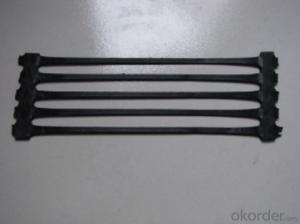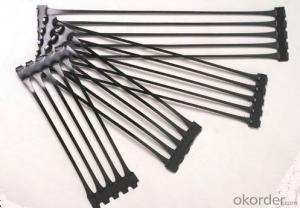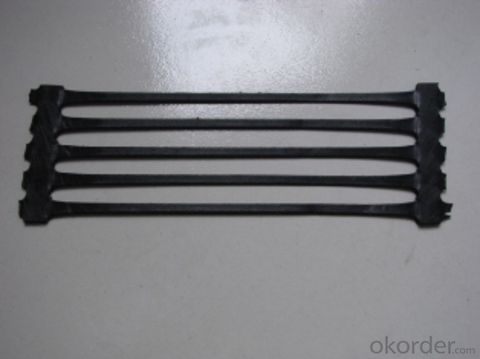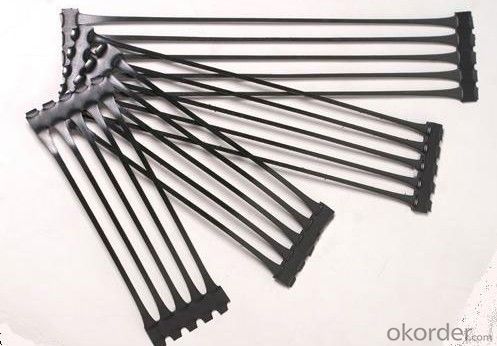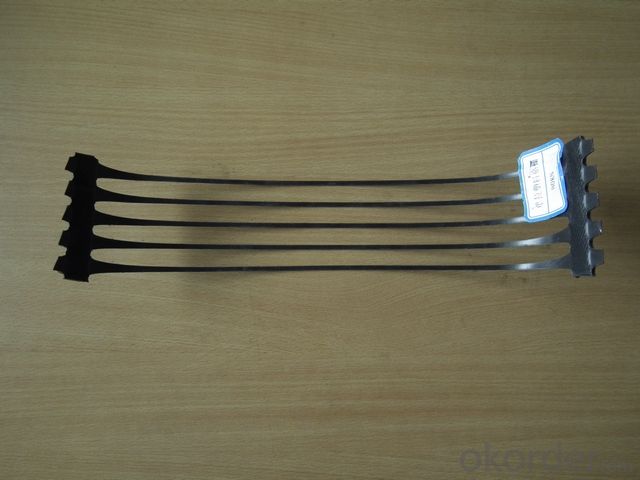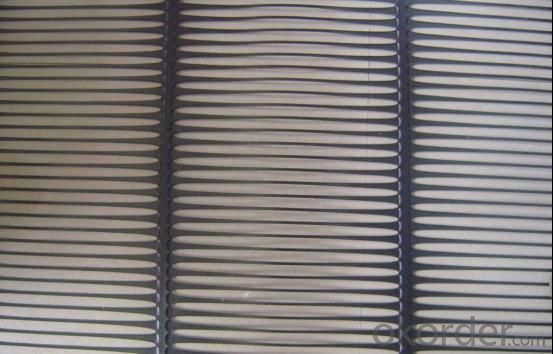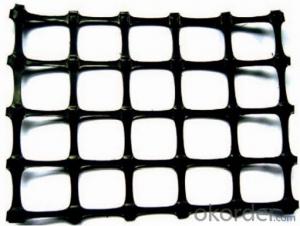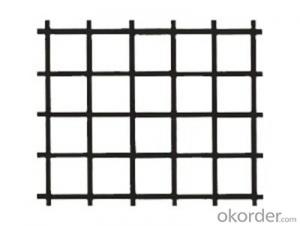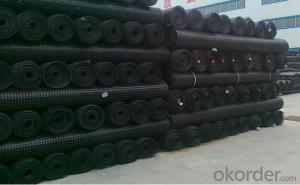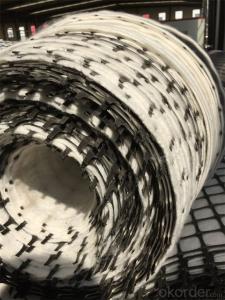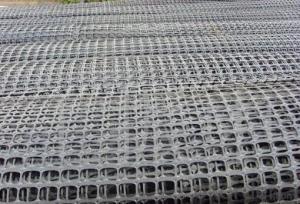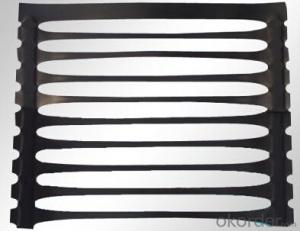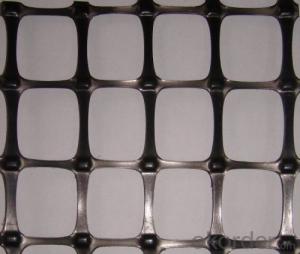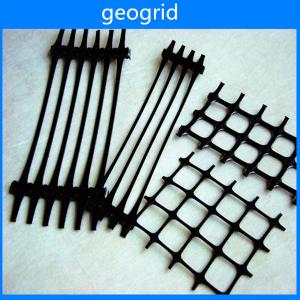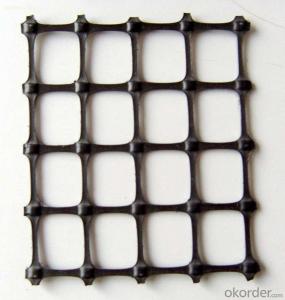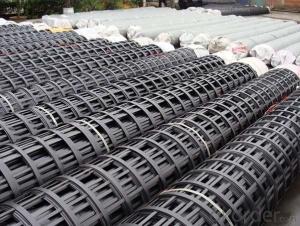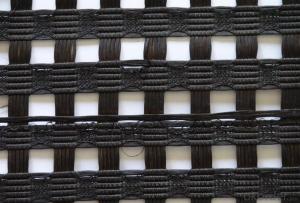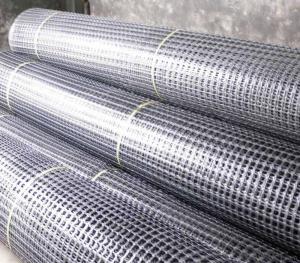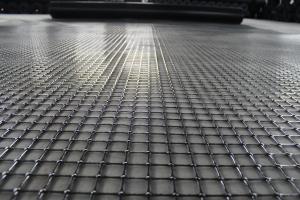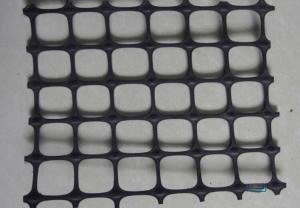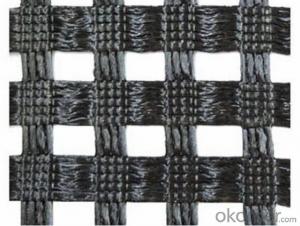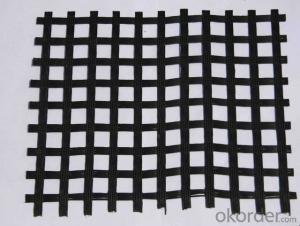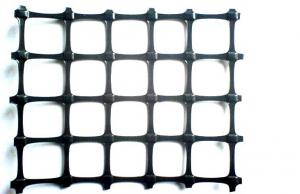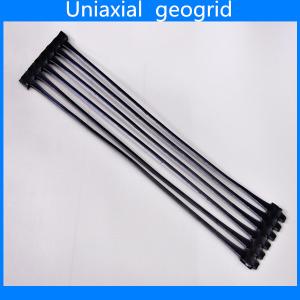Geogrids Nptel Plastic Uniaxial Geogrid for Geosynthetic Stabilization
- Loading Port:
- Tianjin
- Payment Terms:
- TT OR LC
- Min Order Qty:
- 500 m²
- Supply Capability:
- 100000 m²/month
OKorder Service Pledge
OKorder Financial Service
You Might Also Like
(ux) uniaxial geogrids
PP Uniaxial geogrid is expecially designed for soil reinforcement.it is sheet extruded,punched,heated and stretched from polypropylene,it has high tensile strength,excellent interlock capacity and deformation.
Speicification of PP Uniaxial Geogrid
| Property | TGDG | TGDG | TGDG | TGDG | TGDG | TGDG | |
| 35 | 50 | 80 | 100 | 110 | 120 | ||
| Ultimate tensile strength | kN/m | 35 | 50 | 80 | 100 | 110 | 120 |
| Elongation at maximum load | % | 10 | |||||
| Tensile strength at 2 % elongation | kN/m | 9 | 10 | 23 | 29 | 30 | 35 |
| Tensile strength at 5 % elongation | kN/m | 18 | 25 | 44 | 55 | 58 | 65 |
| Creep Limit Strength | KN/m | 15 | 21 | 30 | 39 | 40 | 46 |
| Minimum Carbon Black | % | 2 | |||||
| Property | TGDG 150 | TGDG | TGDG | TGDG | TGDG | TGDG | |
| 170 | 200 | 220 | 240 | 300 | |||
| Ultimate tensile strength | kN/m | 150 | 170 | 200 | 220 | 240 | 300 |
| Elongation at maximum load | % | 10 | |||||
| Tensile strength at 2 % elongation | kN/m | 39 | 45 | 55 | 59 | 65 | 90 |
| Tensile strength at 5 % elongation | kN/m | 77 | 90 | 110 | 120 | 132 | 182 |
| Creep Limit Strength | KN/m | 49 | 57 | 64 | 71.5 | 79 | 100 |
| Minimum Carbon Black | % | 2 | |||||
| Standard Roll Dimensions | |||||||
| Roll Length(m) | 50m | ||||||
| Roll Width(m) | 1m,2m,3m | ||||||
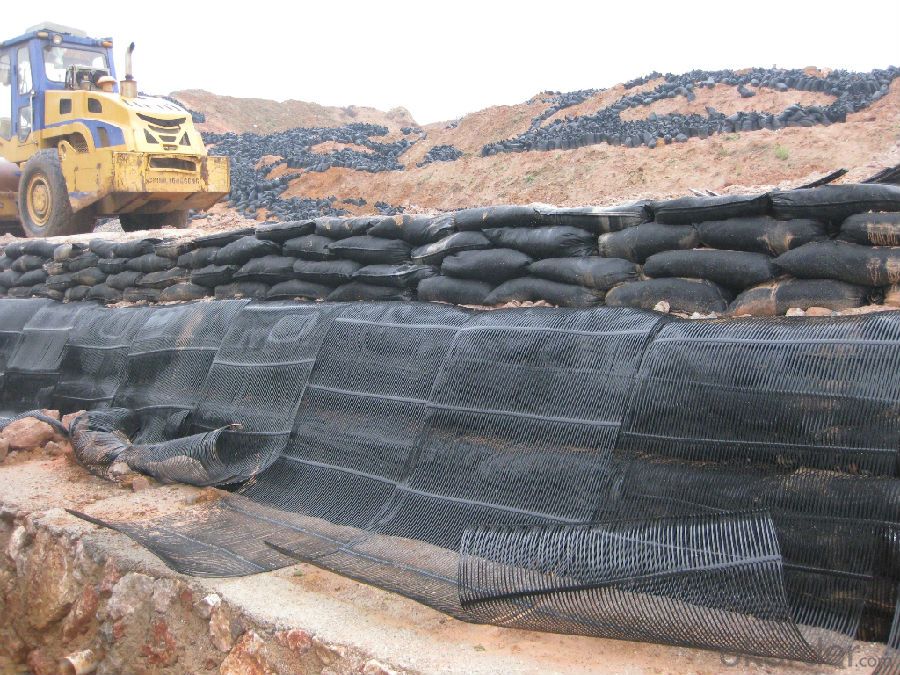
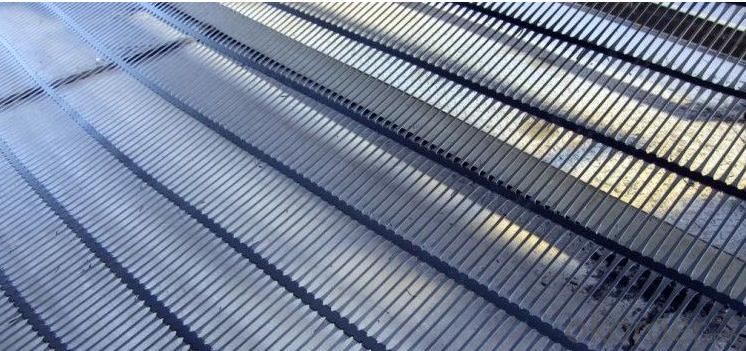
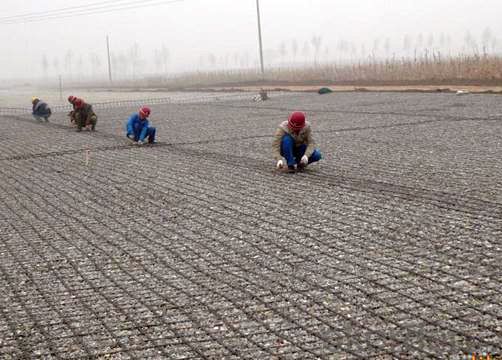
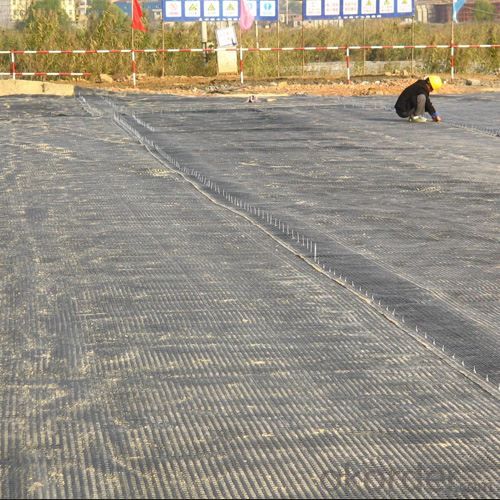
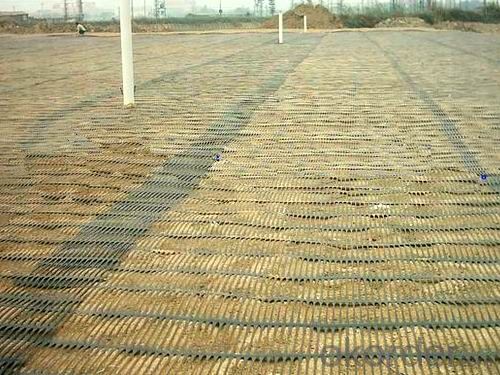
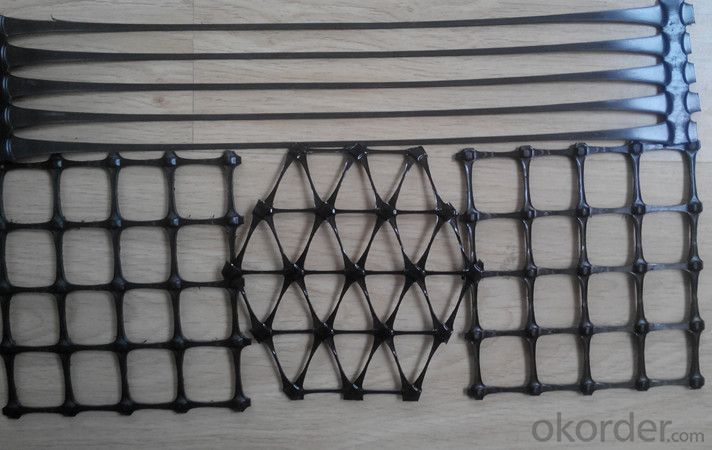
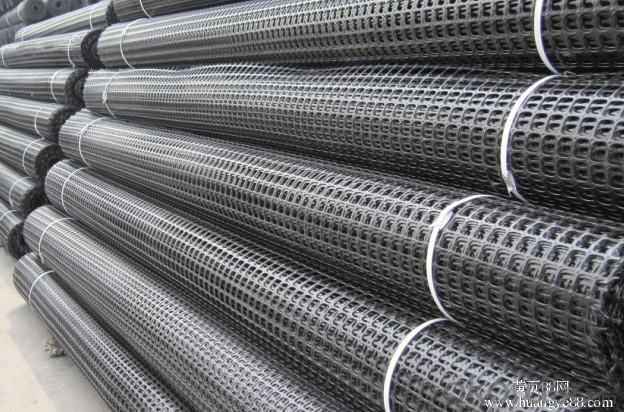
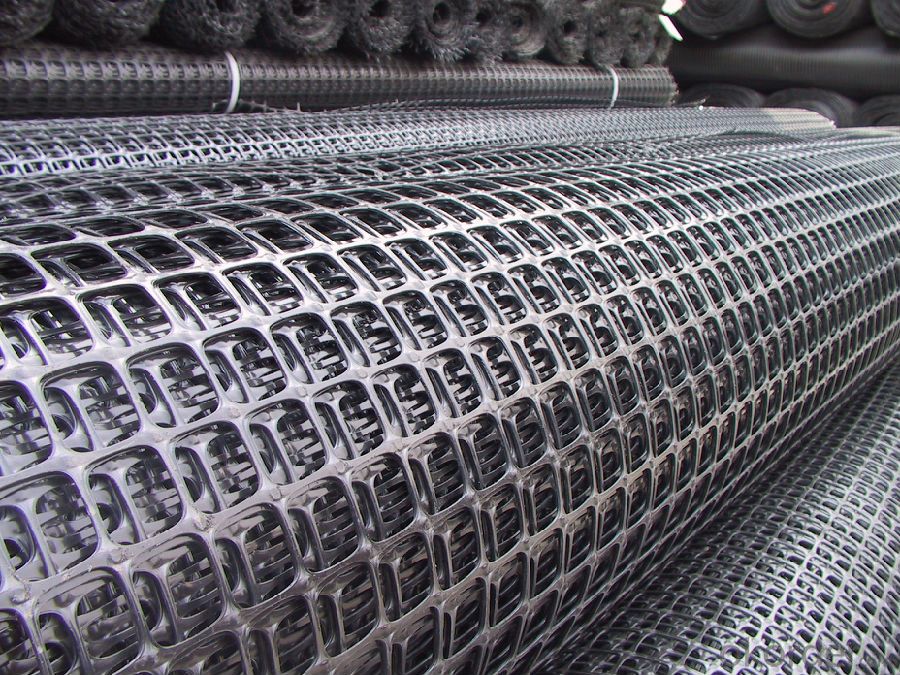
FAQ
1. How about the delivery time?
Lead time since receipt of 30% T/T deposit payment: 3 weeks.
2. What kind of payments does jenor support?
T/T, L/C, Cash are accepted.
3. What's are the MOQ?
We can according to your condition to set the MOQ.
And we can provide you samples for quality inspection.
4. Do you charge for the samples?
Accordeing to our company policy, the samples are freee, we only charge the freight fee. And we will return the freight fee If you set the order .
5. Can you produce the product according to customers' requirements ?
Sure, we are professional manufacturer, OEM and ODM are both welcome.
6. Can you tell me your main customers?
That's our customers' privacy, we should protect their information. At the same time, please rest assured that your information is also safe here.
- Q: Are geogrids suitable for reinforcing bridge abutment backfills?
- Yes, geogrids are suitable for reinforcing bridge abutment backfills. Geogrids provide increased stability and load-bearing capacity to the soil, preventing erosion and settlement. They distribute the load evenly, reducing the risk of structural damage to the bridge abutment. Additionally, geogrids improve the long-term performance and durability of the backfill materials.
- Q: What kind of projects are used to detect the geogrid
- Tensile and elongation
- Q: What are the advantages of using geogrids in ground improvement for seismic stability?
- Geogrids offer several advantages when used in ground improvement for seismic stability. Firstly, they provide increased strength and stability to the soil, enhancing its ability to withstand seismic forces. Geogrids can effectively distribute and dissipate the energy generated during an earthquake, reducing the risk of soil liquefaction and ground failures. Additionally, geogrids can improve the bearing capacity of the soil, allowing it to support heavier loads without experiencing settlement or failure. Furthermore, geogrids are easy to install and cost-effective compared to other ground improvement techniques, making them a viable solution for seismic stability in various construction projects.
- Q: What are the advantages of using geogrids in ground reinforcement?
- Geogrids offer several advantages in ground reinforcement. Firstly, they provide increased stability and support to the soil by distributing loads more evenly. This helps prevent soil erosion, subsidence, and deformation, making them ideal for areas with weak or unstable soils. Secondly, geogrids enhance the load-bearing capacity of the ground, allowing for the construction of structures and infrastructure on softer or less stable ground. Additionally, they improve drainage and reduce the risk of water accumulation, which can weaken the soil. Lastly, geogrids are cost-effective and environmentally friendly, as they require less excavation and use of natural resources compared to traditional ground reinforcement methods.
- Q: Are geogrids resistant to hydrolysis?
- Yes, geogrids are generally resistant to hydrolysis.
- Q: How do geogrids improve the performance of geosynthetic encased columns?
- Geogrids improve the performance of geosynthetic encased columns by enhancing their load-bearing capacity, increasing their stability, and reducing settlement. Geogrids act as reinforcing elements within the column, distributing the applied loads more efficiently and preventing lateral spreading. This reinforcement enhances the overall strength and stiffness of the column, enabling it to support heavier loads and resist deformation, settling, and lateral movement. Additionally, geogrids improve the long-term performance of the columns by reducing the potential for differential settlement, ensuring more uniform load distribution, and increasing the overall durability and longevity of the structure.
- Q: How do geogrids improve the load-bearing capacity of soils?
- Geogrids improve the load-bearing capacity of soils by distributing and reinforcing the applied loads across a wider area. They create an interlocking network within the soil, increasing its overall strength and stability. This reduces soil deformation, preventing settlement and ultimately enhancing the soil's ability to support heavy loads.
- Q: What is a plastic geogrid? What do you say is a one-way geogrid?
- It can be divided into two kinds, one way and two way.
- Q: Are geogrids suitable for slope stabilization?
- Yes, geogrids are suitable for slope stabilization. Geogrids are commonly used in civil engineering projects for reinforcing slopes and retaining walls. They provide stability by distributing the load and preventing soil erosion, thus effectively stabilizing slopes and preventing landslides.
- Q: Are there any design guidelines for using geogrids in reinforcement applications?
- Yes, there are design guidelines available for using geogrids in reinforcement applications. These guidelines provide recommendations for selecting the appropriate geogrid type, determining the required strength and stiffness properties, and specifying the proper installation methods. The guidelines also outline factors such as soil characteristics, loading conditions, and project requirements that need to be considered in the design process. Adhering to these guidelines ensures the effective and efficient use of geogrids in reinforcement applications.
Send your message to us
Geogrids Nptel Plastic Uniaxial Geogrid for Geosynthetic Stabilization
- Loading Port:
- Tianjin
- Payment Terms:
- TT OR LC
- Min Order Qty:
- 500 m²
- Supply Capability:
- 100000 m²/month
OKorder Service Pledge
OKorder Financial Service
Similar products
Hot products
Hot Searches
Related keywords
